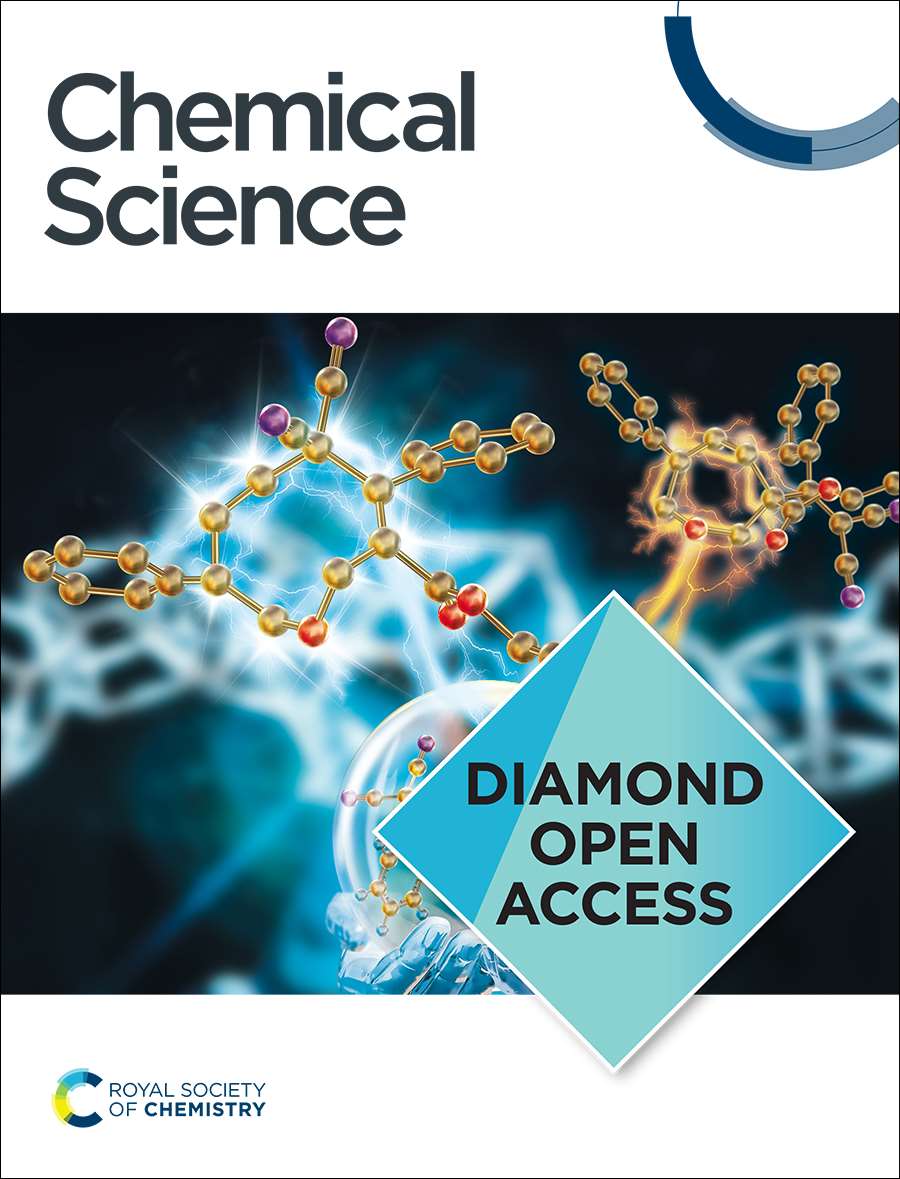场诱导反应物富集增强了苯甲醇电氧化与析氢耦合
IF 7.6
1区 化学
Q1 CHEMISTRY, MULTIDISCIPLINARY
引用次数: 0
摘要
电化学析氢耦合有机氧化(EHCO)是一条很有前途的途径,可以用增值的有机氧化过程取代缓慢的析氧反应,从而提高水电解的能源效率。然而,有机反应物在催化剂表面的有限吸附仍然是制约EHCO体系整体性能的关键瓶颈。在此,我们报道了一种场诱导富集策略,以增强苯甲醇的电氧化和析氢。由负载在氧化铜纳米线上的Au纳米颗粒组成的纳米结构协同催化剂(Au/CuO NWs)在1.5 V时具有734 mA cm - 2的电流密度,同时苯甲醇氧化速率为4.74 mmol cm - 2 h - 1,苯甲酸生成的法拉第效率为91%。该催化剂在无膜流动电解槽中表现出优异的稳定性和持续的工业级电流输出(>300 mA cm - 2)。结合实验和COMSOL模拟结果表明,纳米线形态诱导了更强的局域电场,促进了苄烷氧化物的界面富集和OH*的形成,从而提高了整体性能。这项工作为电催化剂设计中利用局部电场效应建立了一个新的范例,推动了下一代EHCO系统的发展。本文章由计算机程序翻译,如有差异,请以英文原文为准。

Field-induced reactant enrichment enhances benzyl alcohol electrooxidation coupled with hydrogen evolution
Electrochemical hydrogen evolution coupled with organic oxidation (EHCO) offers a promising route to improve the energy efficiency of water electrolysis by replacing the sluggish oxygen evolution reaction with value-added organic oxidation processes. However, the limited adsorption of organic reactants on the catalyst surface remains a key bottleneck, constraining the overall performance of EHCO systems. Herein, we report a field-induced enrichment strategy to enhance benzyl alcohol electrooxidation coupled with hydrogen evolution. A nanostructured cooperative catalyst composed of Au nanoparticles supported on copper oxide nanowires (Au/CuO NWs) delivers an impressive current density of 734 mA cm−2 at 1.5 V vs. RHE, along with a benzyl alcohol oxidation rate of 4.74 mmol cm−2 h−1 and a 91% faradaic efficiency for benzoic acid production. The catalyst demonstrated excellent stability and sustained industrial-level current output (>300 mA cm−2) in a membrane-free flow electrolyser. Combined experimental and COMSOL simulation results reveal that the nanowire morphology induces stronger localised electric fields, promoting the interfacial enrichment of benzyl alkoxide and the formation of OH* species, thereby improving the overall performance. This work establishes a new paradigm for leveraging local electric field effects in electrocatalyst design, advancing the development of next-generation EHCO systems.
求助全文
通过发布文献求助,成功后即可免费获取论文全文。
去求助
来源期刊

Chemical Science
CHEMISTRY, MULTIDISCIPLINARY-
CiteScore
14.40
自引率
4.80%
发文量
1352
审稿时长
2.1 months
期刊介绍:
Chemical Science is a journal that encompasses various disciplines within the chemical sciences. Its scope includes publishing ground-breaking research with significant implications for its respective field, as well as appealing to a wider audience in related areas. To be considered for publication, articles must showcase innovative and original advances in their field of study and be presented in a manner that is understandable to scientists from diverse backgrounds. However, the journal generally does not publish highly specialized research.
 求助内容:
求助内容: 应助结果提醒方式:
应助结果提醒方式:


